Water Resource Management
Novatech Office Energy Saving and Carbon Reduction Code of Practice
Novatech has no self-owned factories. Water usage at operational sites, including offices and work sites, is directly supplied by water utilities companies without drawing from any additional water sources. Water expenses increased slightly in 2024, mainly due to higher shared public water usage. Additionally, Novatech promotes the use of ecofriendly utensils, and with employees bringing their own reusable utensils that require washing, water consumption has
risen slightly.
Novatech continues to promote water conservation through soft measures such as posting water-saving slogans and educational materials, regularly inspecting pipelines for leaks, and prioritizing the purchase of water-efficient equipment to improve water use efficiency. The Company aims to reduce water intensity to 6.5 cubic meters Note 1 per person by 2030.
Note 1: Each cubic meter of water equals 0.001 million liters.
Novatech's Water Resource Usage from 2021 to 2024
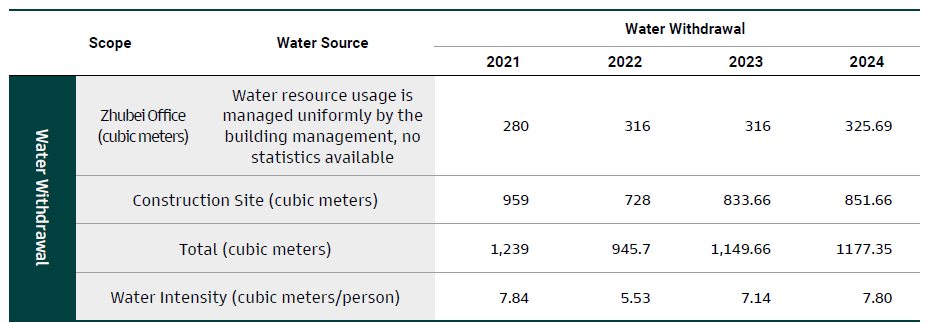
- Note 1: Water withdrawal category is freshwater (≤1,000 mg/L Total Dissolved Solids), calculated based on water bills.
- Note 2: According to the water risk analysis tool developed by World Resources Institute, Taiwan is not considered a global water-stressed area.
- Note 3: In 2024, the water intensity calculation principle was adjusted to use the annual average number of employees as the denominator for calculation.
- Note 4: Each unit of water equals 0.001 million liters. Since Novatech's water consumption is mainly for domestic use and the usage is relatively small compared to general manufacturing industries, the related information is not presented in million liters.
Operational Water Reduction
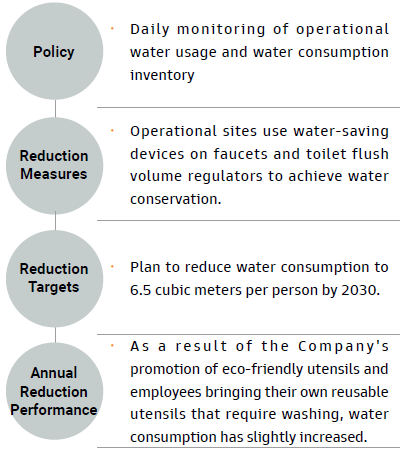
Waste Management
Following the Waste Disposal Act of the Environmental Management Administration, Ministry of Environment,Novatech established the Waste Management Procedures in 2018. Through project personnel from business execution departments and the ISEP Department, they jointly plan the storage and disposal procedures for waste.
For engineering waste, once properly classified,contracted waste management vendors transport the construction waste for processing. We regularly inspect
hazardous waste disposal contractors to ensure their operations comply with regulations. In 2024, the amount of hazardous waste commissioned for treatment was 0.35 tonnes, which was processed through incineration.
For general waste, the main sources are domestic waste and kitchen waste from office areas, which are all uniformly collected and disposed of by the office building
management. In 2024, the general waste generation was 8.14 tonnes, hazardous industrial waste was 0.13 tonnes,totaling 8.27 tonnes, an increase of 2.17 tonnes from the previous year. The waste intensity was 0.055 (tonnes/person), a 44.73% increase from the previous year. The amount of hazardous industrial waste generated during products and services processes varies depending on the level of operational activities.
Looking ahead, we will continue to strengthen waste sorting in offices and work sites, reduce the use of disposable items, and regularly verify proper waste
disposal to avoid secondary environmental pollution caused by improper handling or vendor negligence. We also plan to reduce waste intensity to 30kg/person by
2025.
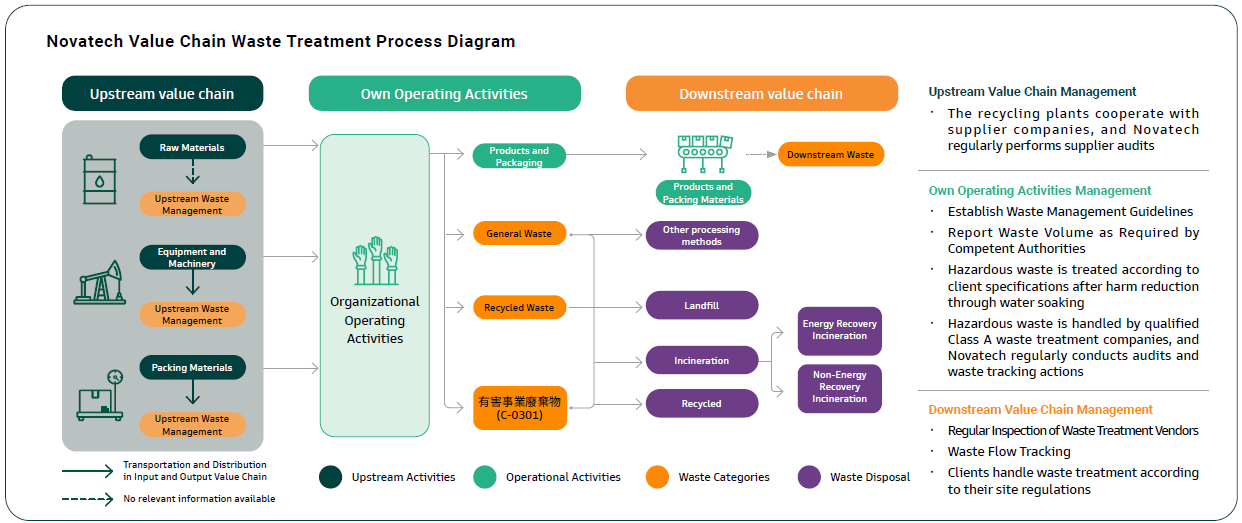
Waste Reduction
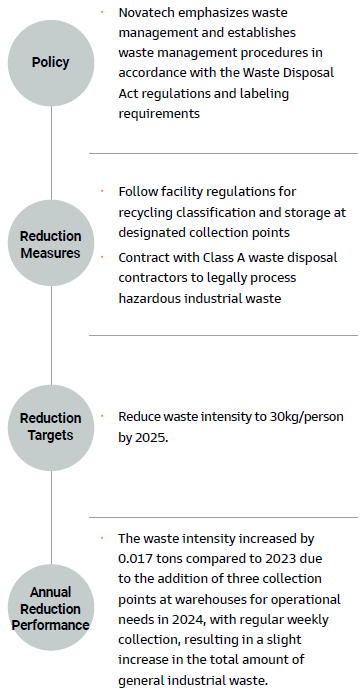
Novatech's Waste Generation in 2021-2024
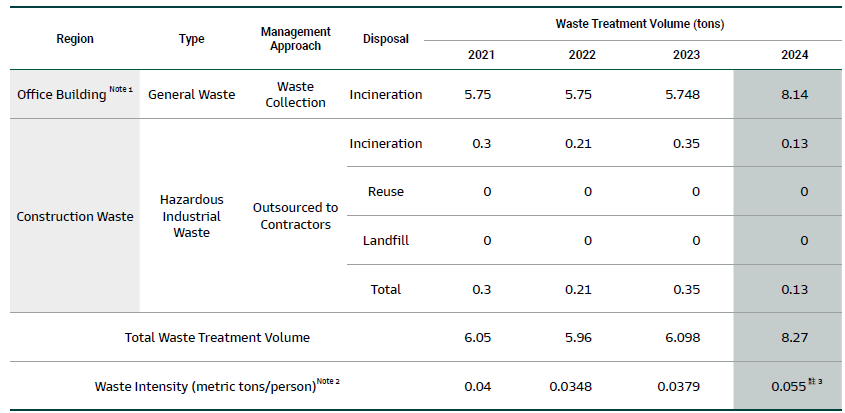
- Note 1: The general waste in office buildings is calculated based on the annual transportation weight specified in the outsourced waste removal contract. The following formula is used: Total office waste = Annual waste removal volume * Novatech's share of floor area / Total building floor area.
- Note 2: The waste intensity is calculated using waste treatment volume as the numerator and divided by the average number of employees in 2024 (151 people) as the denominator.
- Note 3: The waste intensity in 2024 increased by 0.0168 tonnes compared to 2023, due to the addition of three operational warehouse disposal locations, resulting in a slight increase in total general industrial waste.
